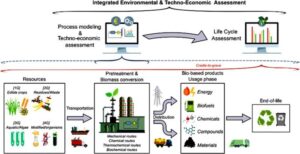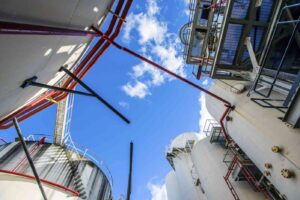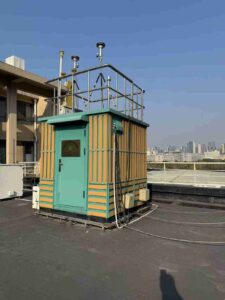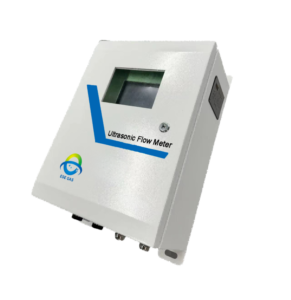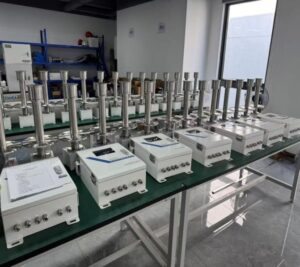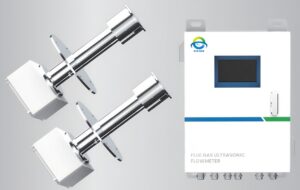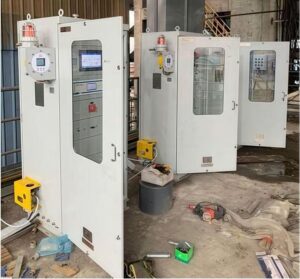Trace hydrogen gas analyzer is an important laboratory instrument and is widely used in research and experiments in chemistry, biology, environment and other fields. It can measure trace amounts of hydrogen concentration in samples, providing valuable data support for scientific research work. This article will introduce the operating steps of the trace H2 gas analyzer in detail, and combine it with a practical case to help readers better understand and use this instrument.

Part 1: Instrument Overview
Before officially entering the operation steps, let us first understand the basic composition and principle of the trace H2 gas analyzer.
1.nstrument composition: Trace H2 gas analyzers usually consist of the following main components:
- Hydrogen generator: used to generate standard hydrogen samples.
- Sample introduction system: used to introduce the sample to be tested into the instrument.
- Detection system: including hydrogen detector and signal acquisition device.
- Control system: used to control the operation of the instrument and data processing.
2.Introduction to the principle
The working principle of the trace H2 gas analyzer is based on the chemical reaction of hydrogen gas. The hydrogen gas in the sample reacts with specific reagents to generate a measurable signal that is proportional to the concentration of hydrogen gas. By comparing the reaction signal of the sample to be measured with a known standard, the hydrogen concentration in the sample can be determined.
Part 2: Operation steps
Next, we will introduce the operating steps of the trace H2 gas analyzer in detail, combined with a practical case, to ensure that you can use this instrument correctly and safely.
- Preparation: Before starting the operation, some preparations are required:
- Check that the instrument is in good working order and make sure all parts are connected properly.
- Prepare standard hydrogen samples and samples to be tested to ensure that they meet the experimental requirements.
- Turn on the instrument and wait for a while for it to reach stable operating temperature.
- Sample Injection: Suppose you are studying changes in hydrogen concentration in groundwater. First, the collected groundwater samples were introduced into the trace H2 gas analyzer through the sample introduction system to ensure that external hydrogen would not be introduced during the sample processing process.
- Sample processing: Because of the various impurities that may be present in groundwater samples, you will need to clean them up through appropriate processing steps. This may include filtration, degassing, etc. to ensure measurement accuracy.
- Calibrating the Instrument Before making actual measurements, the trace H2 gas analyzer needs to be calibrated. Example: Calibration using a standard hydrogen sample of known concentration to establish the instrument’s response curve to relate the instrument’s signal to the hydrogen concentration.
- Measurements and data recording: Once the instrument calibration is complete, actual measurements can begin. The instrument automatically detects the hydrogen concentration in the sample to be measured and converts the result into a digital signal. Case: Measure the hydrogen concentration in different groundwater samples and record the data of each measurement, including sample information, measurement time, etc.
- Data analysis: After the measurements are completed, you can analyze the data to compare hydrogen concentrations in different groundwater samples. By analyzing the data, you can derive important information about changes in hydrogen concentration in groundwater that can aid your research efforts.
- Cleaning and maintenance: After using the trace H2 gas analyzer, be sure to clean and maintain it. This includes cleaning various parts of the instrument, replacing consumables (such as reagents), regular maintenance of the mechanical parts of the instrument, etc. to ensure the long-term stability and accuracy of the instrument.
Part 3: Safety Precautions
When operating a trace H2 gas analyzer, you must pay attention to some safety matters to ensure the safety of the laboratory and the normal operation of the instrument.
- Dangers of Hydrogen: Hydrogen is a flammable gas and must be handled with care. During operation, fire sources, high temperatures and sparks should be avoided to prevent hydrogen leakage from causing danger.
- Instrument maintenance: Regular maintenance of trace H2 gas analyzers is very important to ensure that their performance is stable and accurate. Follow the manufacturer’s maintenance recommendations and make sure consumables and parts are replaced regularly.
- Waste disposal: Waste generated when using the instrument, such as reagent bottles, waste gas, etc., should be disposed of in accordance with the laboratory’s waste disposal regulations. Ensure waste does not pollute the environment.
Part 4: Trace H2 Gas Analyzer Scenes to be Used
A trace hydrogen analyzer is an instrument specially designed to detect trace amounts of hydrogen in gases. This type of instrument has a wide range of applications in different fields, such as:

- Petrochemical industry: During the petroleum refining process, the concentration of hydrogen is monitored to ensure process safety and efficiency.
- Semiconductor manufacturing: In the semiconductor manufacturing process, trace hydrogen analyzers are used to monitor gas purity to ensure product quality.
- steel manufacturing: During the steel refining process, the hydrogen content in the furnace gas is monitored to evaluate the reactions in the furnace and material quality.
- Environmental monitoring: Detect the hydrogen content in the environment and assess the risk and environmental impact of hydrogen leakage.
- laboratory research: In scientific research, trace hydrogen analyzers are used to study the role of hydrogen in different chemical reactions.
Part 5: Our Trace H2 Gas Analyzer
H2 gas analyzer based on the principle of TCD or ECD technology can realize high resolution, high precision, stable and reliable measurement of trace gases, and meet the requirements of process analysis and environmental monitoring.

Hydrogen gas analyzers based on the Thermal Conductivity Detector (TCD) or Electron Capture Detector (ECD) technology are commonly used to measure hydrogen gas concentration in various applications. Both TCD and ECD are effective methods for detecting and quantifying hydrogen levels.
- Thermal Conductivity Detector (TCD):
- TCD operates on the principle that different gases have different thermal conductivities. When hydrogen is present, it changes the thermal conductivity of the gas mixture, and this change is measured by the detector.
- TCD-based hydrogen gas analyzers can provide accurate measurements of hydrogen concentration in percentage (%).
- Electron Capture Detector (ECD):
- ECD works by measuring the electrical conductivity of the gas. In the presence of hydrogen, certain gases become more conductive due to the capture of electrons by the hydrogen molecules.
- ECD-based hydrogen gas analyzers are sensitive and can measure very low concentrations, often in parts per million (ppm).
Trace gas analyzers find applications in various fields, including environmental monitoring, atmospheric research, industrial emissions control, medical diagnostics, and process monitoring. They can detect and quantify a wide range of trace gases, including greenhouse gases, volatile organic compounds (VOCs), atmospheric pollutants, and trace impurities in industrial gases. The choice of a trace gas analyzer depends on factors such as the target trace gas, required detection limits, measurement range, sample handling requirements, and application-specific needs. It is important to select an analyzer that provides the necessary sensitivity, accuracy, and reliability for the specific trace gas analysis requirements.
Conclusion
The Trace H2 Gas Analyzer is a powerful laboratory instrument that can be used to measure trace amounts of hydrogen gas concentration in samples. Proper operation and maintenance of instruments is key to ensuring experimental accuracy and safety. By following the operating procedures and safety precautions provided in this article, you can better use the trace H2 gas analyzer and provide reliable data support for your research work. I hope this article was helpful and I wish you success in your lab work!
If you have any questions, please feel free to contact us!





